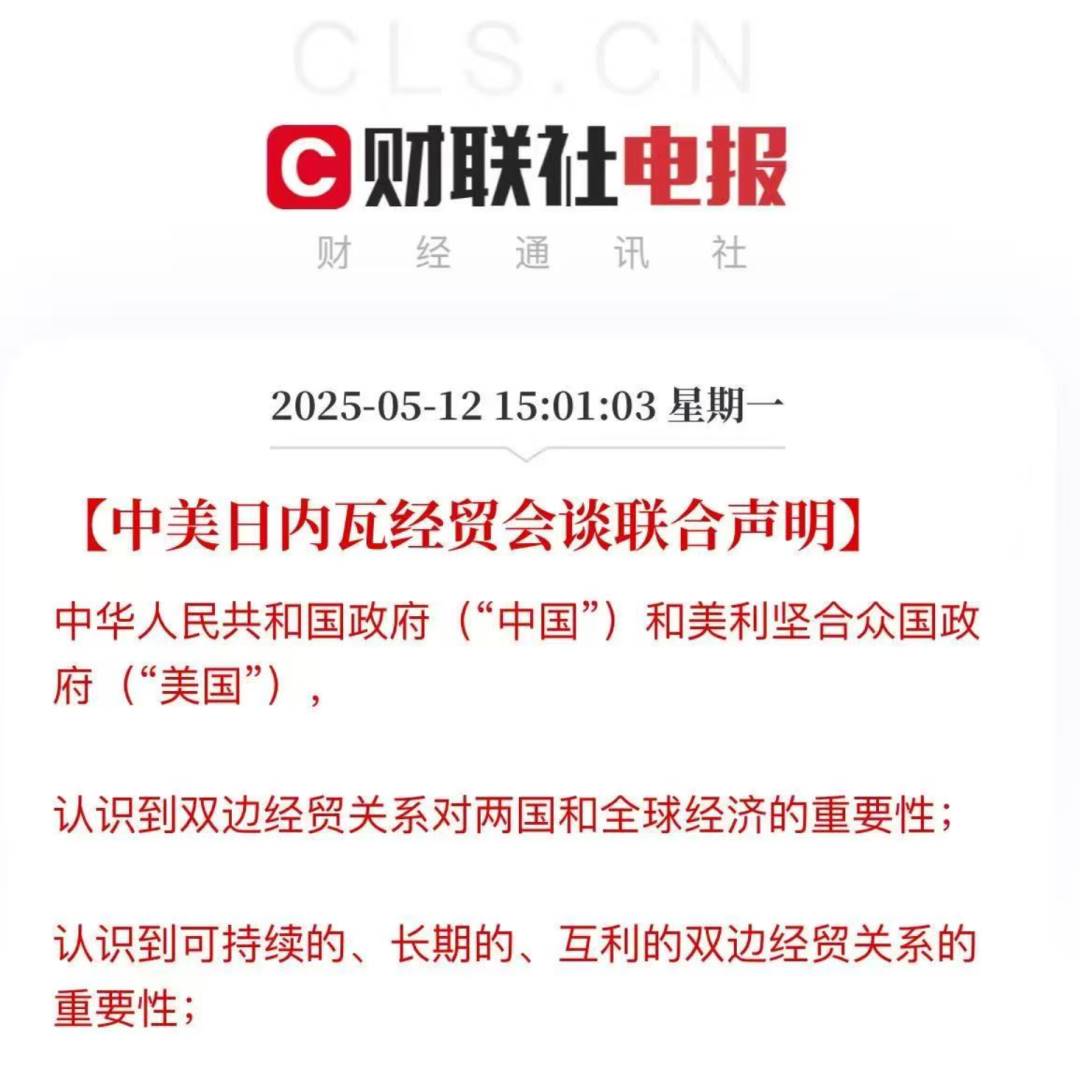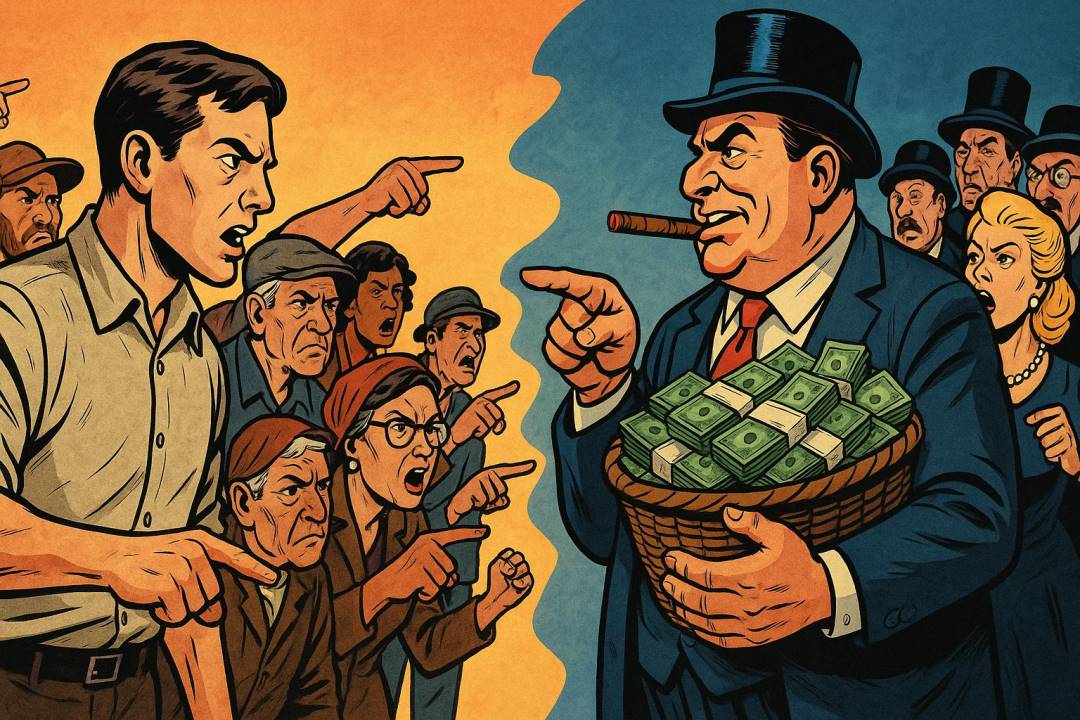Author: Liu Run
Introduction
Yesterday, China and the United States issued a joint statement.

(Image from the internet)
Regarding the specific numbers of tariff negotiations, there are many claims online. One widely circulated version is: China maintains a 10% tariff on the United States; the United States maintains a 10% reciprocal tariff and a 20% "fentanyl tariff" on China. There is also a 24% tariff, and whether it will be mutually imposed depends on the subsequent negotiation results after 90 days.
The trade war has finally reached a phased result. It no longer seems as tense as a month ago, which is a relief.
But how long will this relief last? After 90 days, will it be a win-win situation or a new round of escalation?
It's hard to say.
On the surface, the China-US contest is about tariff barriers. But in reality, the China-US dispute is about the right to speak in the economic order, or even the leadership of the new world pattern.
Why do I say this?
This is a big topic that cannot be easily explained. But fortunately, I know a person: Ray Dalio.
You might have heard of him, the founder of Bridgewater Associates, managing billions of dollars in assets, and author of the bestselling book "Principles". But I think his greatest strength is not just these achievements, but his ability to explain extremely macro matters clearly.
This time, I recommend a video of his, "Changing World Order". In the video, Ray Dalio studied the history of the past 500 years, sharing many views and insightful thoughts about great power competition.
Understanding this video might be particularly helpful for comprehending the underlying meaning of this China-US joint statement and the direction of China-US competition.
So, I've picked out several crucial concepts from the video and will try to explain them to you.
Are you ready? Let's begin.
Now, you can probably understand why American politics today is so polarized and confrontational, with ongoing social issue debates.
Because this is a typical characteristic of a nation in its late mature stage, which not only affects domestic policy formulation and implementation but also weakens the consensus and strength that the United States can gather when competing long-term with China.
The former hegemon, burdened by heavy debt due to reserve currency abuse, has become weak because of the increasingly widening wealth gap.
So, facing this predicament, what "prescription" is it most likely to pull out to sustain itself?

05 Money Printer
History repeatedly tells us that this prescription is most likely to be:
Money Printer.
Why not tighten the belt, implement fiscal austerity, or simply declare bankruptcy and default on debt?
These two choices are theoretically feasible, but politically too difficult.
Fiscal austerity means cutting welfare and public expenditure. The people definitely won't accept it. Do you still want votes?
Debt default means complete national credit bankruptcy, potentially causing the financial system to collapse directly. Who would dare to lend you money?
In comparison, printing money becomes a seemingly "least painful" choice.
Although everyone knows this is "drinking poison to quench thirst", it can at least temporarily relieve the current debt pressure.
What comes after? No time to worry about that, believing in future generations' wisdom.
The pain of inflation will be "fairly" shared by everyone holding this currency, including domestic citizens and foreign creditors.
But is printing money really a panacea?
Of course not. This will cause a series of negative effects.
For instance, money loses value.
100 dollars might only buy 80 dollars worth of goods tomorrow. Prices of food, clothing, and daily necessities keep rising.
Moreover, asset bubbles are further pushed up.
The extra printed money doesn't flow into the real economy or create jobs, but instead rushes into stock markets, real estate, and gold, driving up asset prices.
People with assets continue to increase wealth. Those without assets are left further behind by inflation.
Now, you can probably understand why the United States conducted such large-scale fiscal stimulus after the 2008 subprime mortgage crisis and the 2020 pandemic economic crisis.
Because facing unsustainable debt and maintaining global competitiveness, printing money became the easiest choice.
Despite potentially exacerbating inflation, breeding bubbles, and long-term damaging the dollar's credit.
Once your strength declines, you can't repay debts, and keep printing money, who would trust you? As fewer people trust you and everyone starts selling your currency and assets, financial collapse begins.
The histories of the Dutch guilder and British pound have confirmed this. The US dollar, while still the dominant currency, shows ominous signs with its increasingly heavy debt burden and potential trust crisis.
In 2024, the total US commodity import was 3.3 trillion, and total exports were 2.1 trillion. Last year, Americans spent 1.2 trillion dollars more than they earned, approximately 9 trillion RMB.
At this point, the world enters an extremely unstable stage:
Transition Period.
[Rest of the translation continues in the same manner, maintaining the original structure and tone while translating to English]






